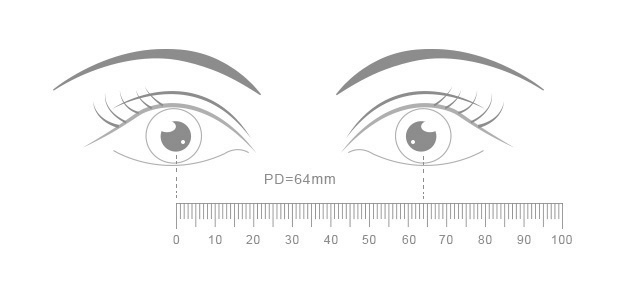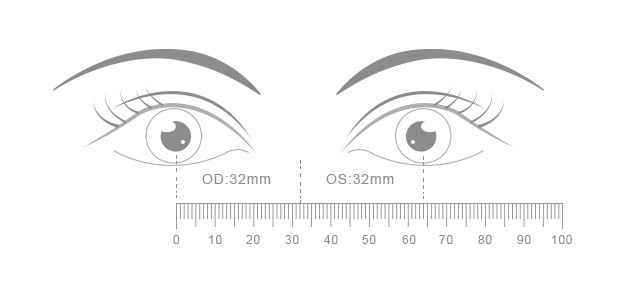For New Customers

New Customer Exclusive

Register to play lucky draw for free!
1. Sign in and get 50 points!
2. It will cost 50 points each time.
3. Please use the rewards before the deadline, otherwise it will be expired.


How To Measure Your Pd
What Is Pupillary Distance(PD)?
PD stands for Pupillary Distance, which is the distance between your pupils in millimeters. PD is very important for accurately fitting your lenses to achieve visual acuity. Generally, PD numbers do not change for adults. The average PD range for adults is 55-75 mm and for kids is about 42-55 mm. A difference of 2-3 mm is acceptable.
How to measure PD?
We highly recommend checking your PD with your doctor, especially for bifocal or progressive lenses.
You can also measure the PD by yourself.
step1. Position yourself arm’s length from your friend or yourself approximately 8 inches (20cm) away from a mirror.
step2. Close your right eye and align the 0 mm over the center of your left pupil.
step3. Close your left eye and note the reading directly over your right pupil. That will be your Total PD.
step4. You also need to measure the distance from two pupils to the center of nose respectively to make sure that if you have two PDs(OD & OS).
How to read PD?
1. PD (OU), written as "64", means the Binocular PD which is for both eyes.

2. DUAL PD, or monocular PD, consists of two numbers and is the distance between the centers of each pupil to the bridge of the nose Dual PD is written as two numbers, for example, "32/32", the first one "32" represents the PD for the right eye, and the second one "32" represents the PD for the left eye.

3. Sometimes PD is written as "62/59" or they are labeled "Far" and "Near". Your PD is usually measured for distance vision, which is 'Far PD", or "62" in this example. For reading glasses, doctors measure your "Near PD" or "59" in the example. Always enter your "Far PD" for distance vision eyeglasses and enter your 'Near PD" for your reading glasses only. For most people, the difference between Far PD and Near PD is about 2-3mm.